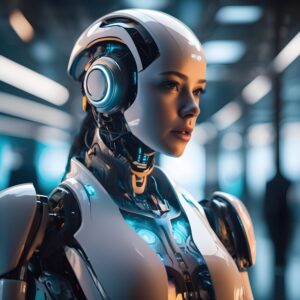
Reinforcement learning (RL) is a dynamic field of artificial intelligence (AI) that focuses on how agents learn to make decisions through interactions with their environment. Unlike traditional machine learning, in which a model is trained on a static dataset, trial and error is relied upon in reinforcement learning in order to maximize rewards. In this guide, we’ll break down how reinforcement learning works, its key components, and real-world applications.
Understanding Reinforcement Learning Components
At its core, reinforcement learning revolves around three primary elements:
- Agent: The decision-maker in the system.
- Environment: The world in which the agent operates and makes decisions.
- Rewards: The feedback the agent receives based on its actions.
The agent takes actions in the environment, receives feedback (rewards or penalties), and adjusts its behavior to maximize cumulative rewards over time. This trial-and-error approach allows the agent to explore different strategies and learn from its experiences.
How RL Algorithms Work
Reinforcement learning algorithms can be divided into model-free and model-based. A popular model-free approach includes Q-learning, where the agent learns a value function that maps states and actions to rewards. Another approach is policy gradient methods. In this case, the agent directly learns the optimal policy by adjusting its actions based on gradients of expected rewards. As a result, the agent continuously improves its decision-making process.
- Exploration vs. Exploitation: RL agents must balance exploration (trying new actions) and exploitation (choosing the best-known action).
- Learning Rate: This parameter determines how quickly the agent updates its understanding of the environment based on new rewards.
- Discount Factor: This determines the importance of future rewards over immediate rewards.
Applications of Reinforcement Learning
Reinforcement learning is used in various fields like robotics, where robots learn to perform tasks, and in video games, where AI agents learn to outperform human players. It’s also being applied in fields like finance, healthcare, and autonomous driving. For example, in healthcare, RL models help optimize treatment plans based on patient data and feedback.
Transitioning to Advanced RL Models
Once an agent becomes proficient at basic tasks, then advanced models like deep reinforcement learning can be introduced. In particular, these models combine neural networks with RL in order to solve more complex tasks, such as real-time strategy games and autonomous navigation. Deep Q-Networks (DQNs) are a notable example of using deep learning to approximate value functions in high-dimensional environments.
- Visit our other website: machinepwr.com


